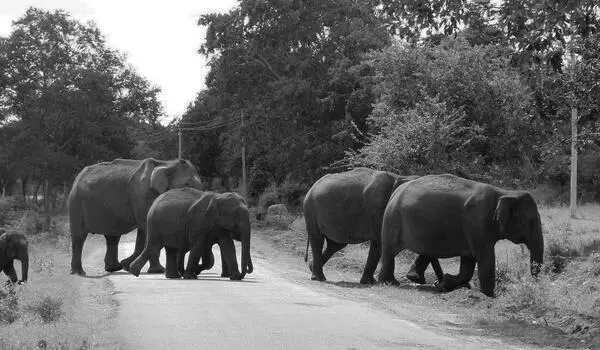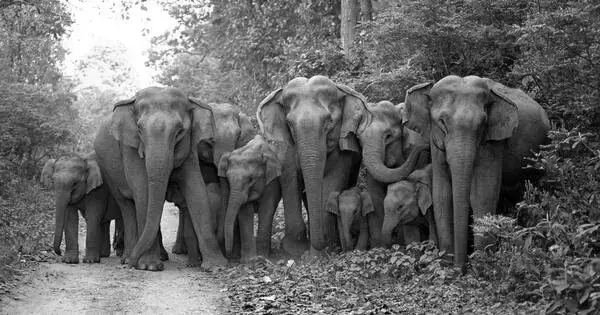Human-wildlife conflict is a significant and growing threat to the long-term survival of some of the world’s most iconic species, including elephants and tigers. Human-wildlife conflict occurs when human-wildlife encounters result in negative outcomes such as loss of property, livelihood, or even life. Defensive and retaliatory killing may lead to the extinction of these species. These encounters cause suffering not only for the people and wildlife directly affected by the conflict, but they can also have a global impact, with groups such as sustainable development agencies and businesses feeling the aftereffects. The magnitude of the problem is significant and truly global, but we are nowhere near being able to address it at the necessary scale.
Using a risk framework, the researchers modeled the risk of human-elephant conflict in Thailand under various climate change scenarios. Climate change has caused a spatial shift in the risk of conflict, with northern areas and higher latitudes showing increased risk in the future. These findings can be used to develop planning strategies in affected communities and raise awareness of coexistence.
The potential for humans and wildlife to interact is increasing as natural areas become more fragmented. Climate change, according to Japanese researchers, is altering the risk of such interactions.
We discovered a spatial shift in risk toward northern areas and higher latitudes. In other areas, habitat is likely to become less suitable over time, potentially increasing and then decreasing the risk of interactions.
Nuntikorn Kitratporn
Researchers from The University of Tokyo’s Institute of Industrial Science examined how the risk of human-elephant conflict could change over time in a recent study published in Science of the Total Environment. When humans encroach on natural landscapes, the likelihood of encounters with wildlife increases. When wildlife harms livestock or crops, or when human activities harm animal habitat, conflicts can arise. For example, elephants on the hunt for food find forest edges particularly appealing, which can bring them into contact with mature crops or farmers.
“In Thailand, half of the country’s population live in rural areas and rely on agriculture,” says lead author Nuntikorn Kitratporn. “Thailand also has about three to four thousand wild elephants and deforestation and the growth of commercial agriculture have pushed elephants into increasingly fragmented patches of habitat, increasing the chance of interactions between humans and elephants.”

People and wildlife are increasingly interacting and competing for resources as human populations and demand for space grow, potentially leading to increased human-wildlife conflict.
Human-wildlife conflict, along with other threats, has contributed to the decline of once-abundant species and is pushing others to extinction. However, the issue of human-wildlife conflict has far-reaching consequences that go beyond the wildlife and communities directly affected. Human-wildlife coexistence is strongly linked to and important to sustainable development activities, with human-wildlife conflict centered on the interaction of wildlife and humans. Human-wildlife conflict, if not effectively managed, has the potential to negatively impact these activities as well as conservation in general.
Climate change is adding to the complexity of these interactions, as changing environmental conditions cause changes in elephant behavior and distribution. Human-elephant conflict may worsen in rural areas where people rely on agriculture for survival. The researchers used a risk framework that included various possible scenarios to assess the risk of this. They used this framework to examine the recent spatial distribution of human-elephant conflict in Thailand (2000-2019) and how it might look in the future (2024-2044). Various future climate and socioeconomic projections were incorporated into the framework, and the effects on land use were investigated.
Nuntikorn Kitratporn says, “We discovered a spatial shift in risk toward northern areas and higher latitudes. In other areas, habitat is likely to become less suitable over time, potentially increasing and then decreasing the risk of interactions.”
Long-term planning requires an understanding of how human-wildlife interactions may change in the future. The findings of this study could be used to develop community planning strategies and raise awareness of how humans and wildlife can coexist.





